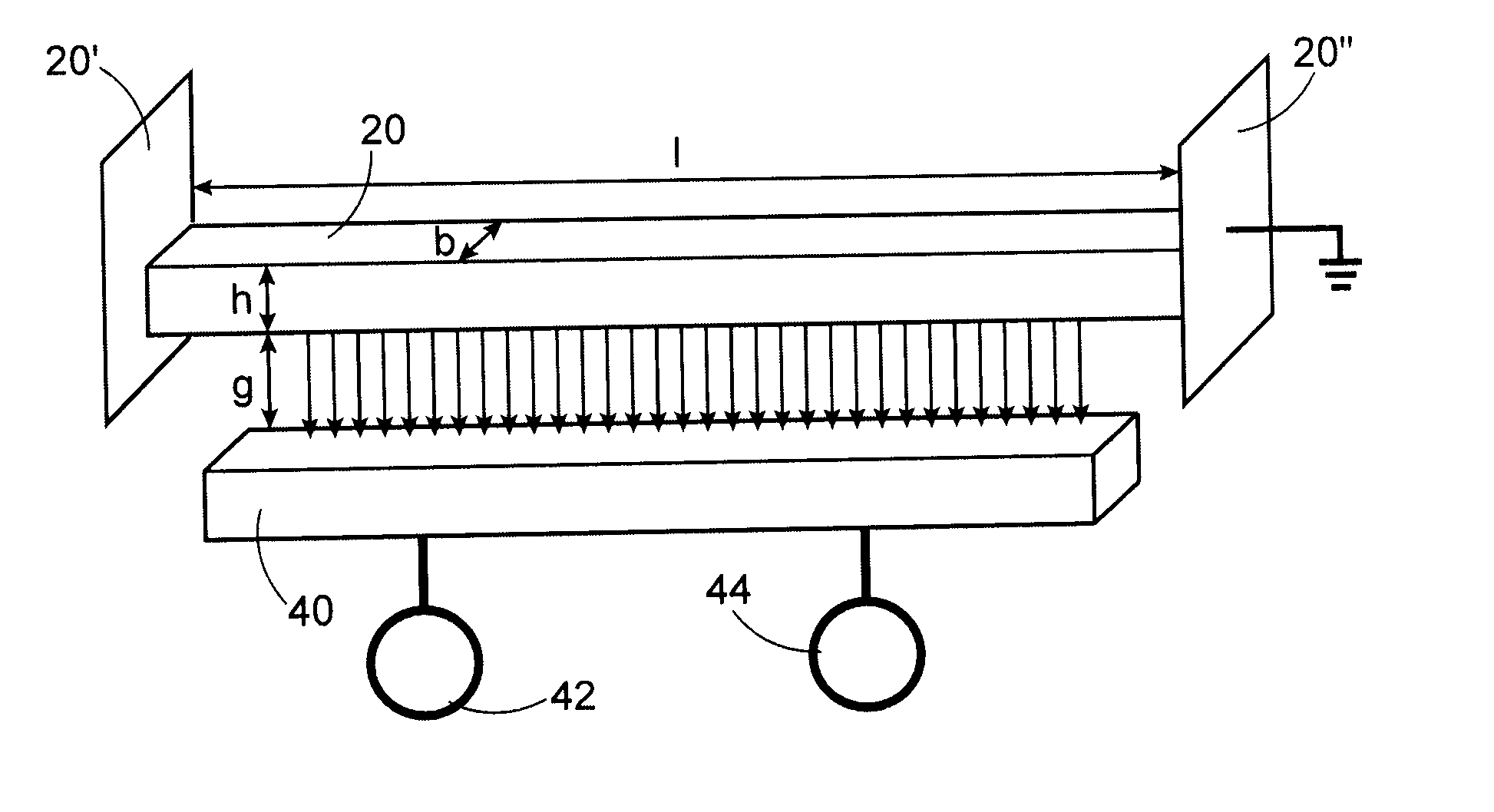Method and device for suppressing hysteresis of resonators through simultaneous resonance
a resonator and simultaneous resonance technology, applied in the field of resonators, can solve the problems of reducing the stability of the resonator, and reducing the signal to noise ratio, so as to increase the signal/noise ratio
- Summary
- Abstract
- Description
- Claims
- Application Information
AI Technical Summary
Benefits of technology
Problems solved by technology
Method used
Image
Examples
Embodiment Construction
[0051]According to a first example of the invention, a nonlinear resonator is implemented, for example an embedded beam 20, to which are simultaneously applied a super- or subharmonic resonance and a primary resonance. Let us specify that a beam may have a square or rectangular cross section (as in the figures), or any cross-section in variation, particularly circular, as for a nanowire 201 (as in FIG. 13) or a nanotube.
[0052]Let there be a non-linear resonator of order n to which is applied a force of amplitude F and of natural frequency
ω=ω0=keffmeff.
The equation of motion of this resonator is:
meff{umlaut over (x)}+ceff{dot over (x)}+keffx+αnxn=F cos ωt
[0053]If the resonator were purely linear (that is, if αn=0) only a so-called primary resonance would be observed when ω=ω0. The primary resonance is that at which there is resonance if the resonator is purely linear.
[0054]Due to the nonlinear terms, resonances of the resonator are observed in its natural mode at ω0 when ω=ω0 / n (sup...
PUM
 Login to View More
Login to View More Abstract
Description
Claims
Application Information
 Login to View More
Login to View More - R&D
- Intellectual Property
- Life Sciences
- Materials
- Tech Scout
- Unparalleled Data Quality
- Higher Quality Content
- 60% Fewer Hallucinations
Browse by: Latest US Patents, China's latest patents, Technical Efficacy Thesaurus, Application Domain, Technology Topic, Popular Technical Reports.
© 2025 PatSnap. All rights reserved.Legal|Privacy policy|Modern Slavery Act Transparency Statement|Sitemap|About US| Contact US: help@patsnap.com



